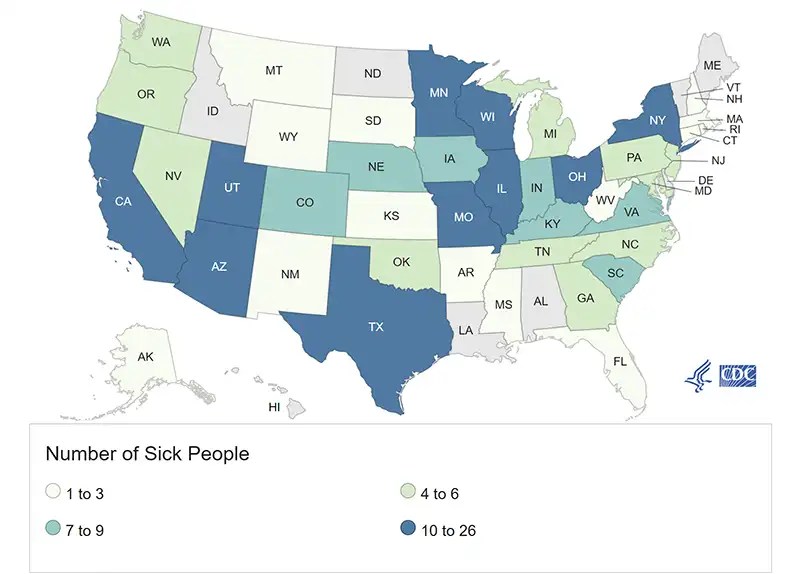Posted by the Centers for Disease Control and Prevention on December 15, 2023:
Epidemiologic Data
Since the last update on December 7, 72 more illnesses have been reported. As of December 14, 302 people infected with one of the outbreak strains of Salmonella have been reported from 42 states (see map). Illnesses started on dates ranging from October 16, 2023, to November 28, 2023 (see timeline). Of 263 people with information available, 129 (49%) have been hospitalized. Four deaths have been reported, three from Minnesota and one from Oregon.
The true number of sick people in this outbreak is likely much higher than the number reported, and the outbreak may not be limited to the states with known illnesses. This is because many people recover without medical care and are not tested for Salmonella. In addition, recent illnesses may not yet be reported as it usually takes 3 to 4 weeks to determine if a sick person is part of an outbreak.
Public health officials collect many different types of information from sick people, including their age, race, ethnicity, other demographics, and the foods they ate in the week before they got sick. This information provides clues to help investigators identify the source of the outbreak.
The table below has information about sick people in this outbreak (“n” is the number of people with information available for each demographic).
| Demographics | Information |
|---|---|
| Age (n=299) | Range from <1 to 100 years Median age of 61 years 26% are 5 years or younger 48% are 65 years or older |
| Sex (n=300) | 48% Male 52% Female |
| Race (n=240) | 84% White 11% African American/Black 4% Asian <1% Native American or Alaska Native 1% reported more than one race |
| Ethnicity (n=239) | 89% non-Hispanic 11% Hispanic |
State and local public health officials are interviewing people about the foods they ate in the week before they got sick. Of the 145 people interviewed, 107 (74%) reported eating cantaloupe. This percentage was significantly higher than the 19.6% of respondents who reported eating cantaloupe in the FoodNet Population Survey—a survey that helps estimate how often people eat various foods linked to diarrheal illness. Of the 107 people who reported eating cantaloupe, 56 people specifically reported eating pre-cut cantaloupe and 29 reported eating whole cantaloupe.
Forty people resided at long-term care facilities when they got sick. Of 17 interviewed, 11 reported eating cantaloupe.
Thirty children attended childcare centers when they got sick. Of 26 children with information available, 17 ate cantaloupe.
Laboratory Data
WGS analysis of bacteria from 300 people’s samples did not predict resistance to any antibiotics. More information is available at the National Antimicrobial Resistance Monitoring System (NARMS) site.
Public Health Action
Since the last update, one additional recall for cantaloupes has been issued. Stop & Shop recalled cantaloupes purchased from October 23 through November 11.



